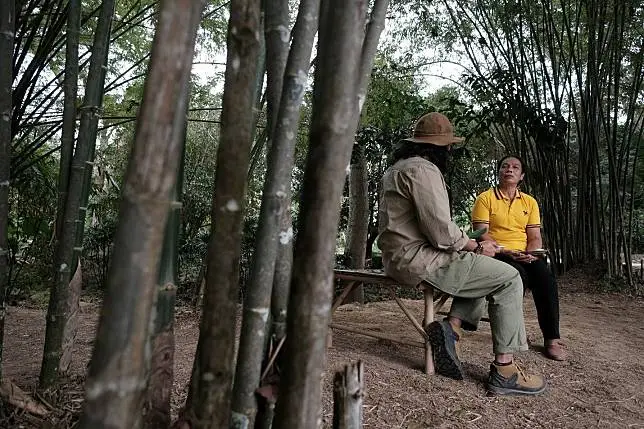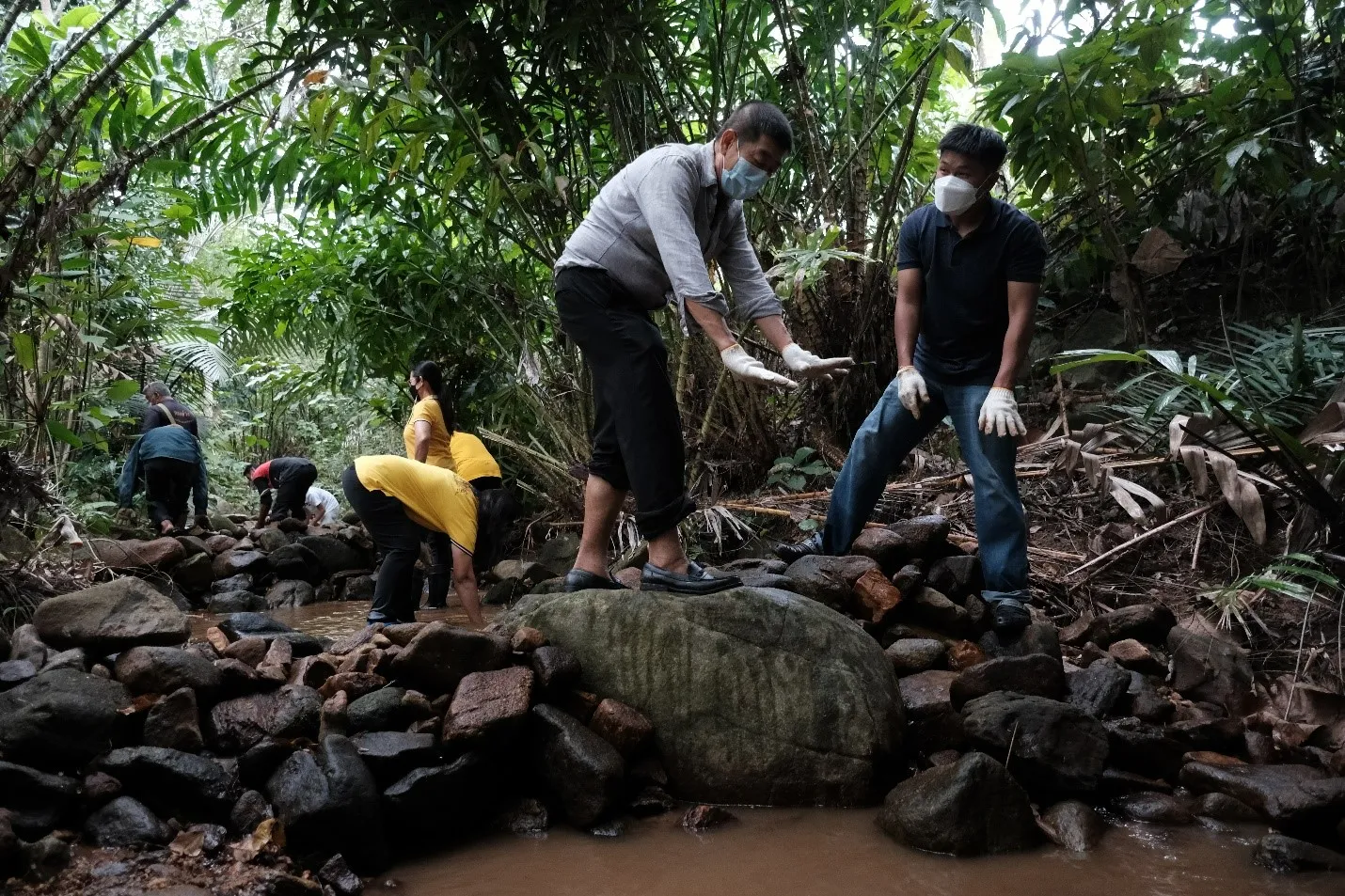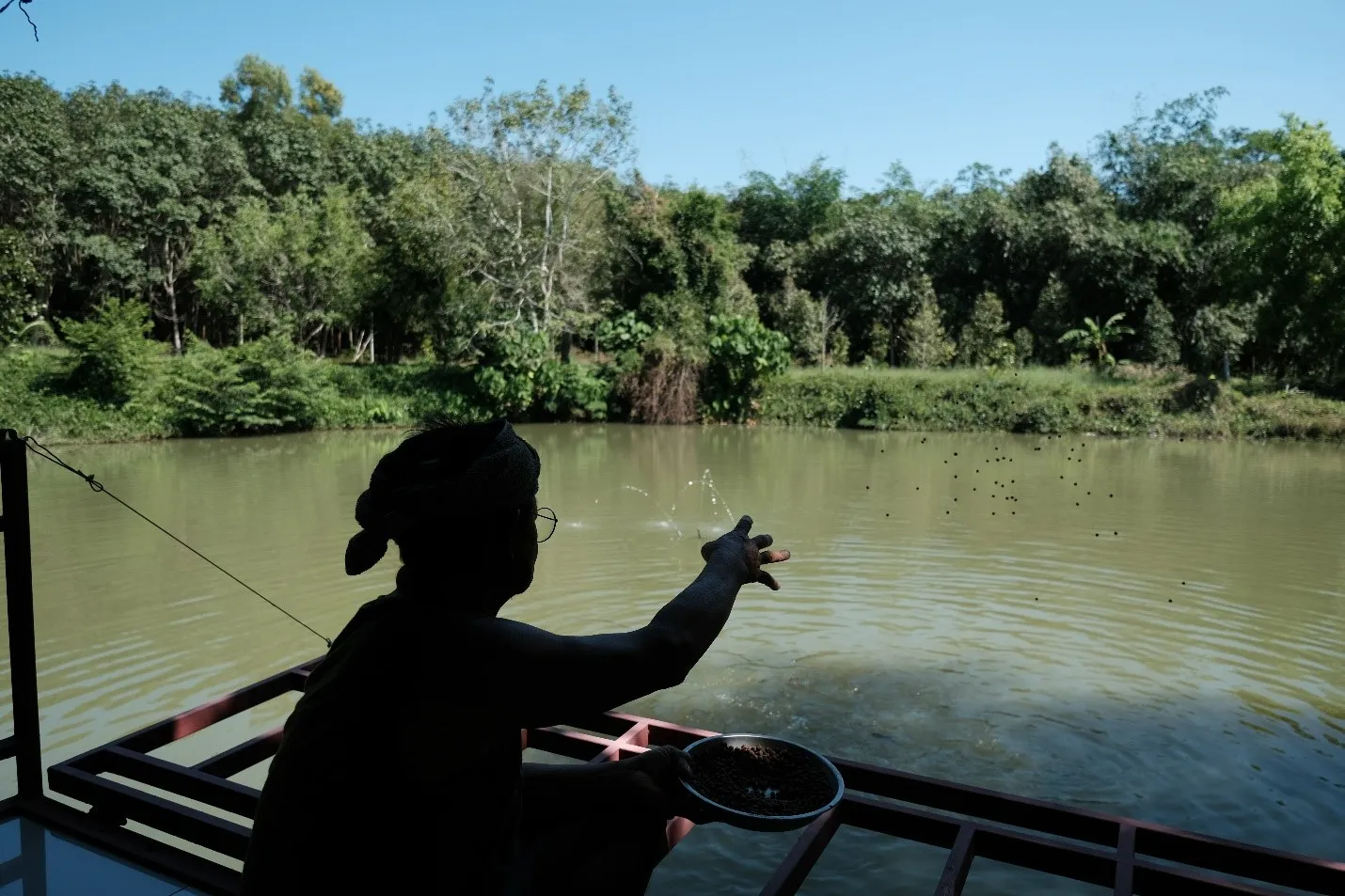Drought is a natural disaster that arises from a scarcity of water and precipitation in a particular area over an extended period. This scarcity is due to the amount of rainfall being lower than average under normal conditions or the absence of rainfall in its expected season. As a result, soil moisture, groundwater levels, and natural water sources decrease, leading to drought conditions that cause damage to agricultural outputs. The condition of water scarcity affects the livelihood of people and the balance of the ecosystem. Currently, the effects of climate change have exacerbated the severity of drought conditions.
In this article, SCGC invites readers to explore the lessons learned from the "2 Cultivate 2 Collect" model, a project that reflects the knowledge and practices in water management for communities by SCGC over more than a decade. This initiative aims to empower local communities with the knowledge and skills for self-sufficient water management. It also aligns with the sustainability trend in 2024.
Challenges from Urbanization
The Eastern Seaboard Development Program (EEC), initiated in 1982, catalyzed a shift in the economic structure from agriculture to industry and services in the eastern coastal regions of Thailand. This transformation was accompanied by significant demographic changes in the area, particularly between 2017 and 2021, where there was a continuous increase in population density.
Simultaneously, there was a significant surge in the demand for resources to meet the growing needs. A notable example is the water usage in Rayong Province in 2019, which witnessed a difference in water demand of 384.4 million cubic meters (compared to the water demand in 2005, which was 926.6 million cubic meters). This situation has adversely affected the agricultural land in the province, which has seen a decrease from 78.67% in 2000 to just 67.04% of the total area by 2020.
These environmental challenges have also affected the Map Chan community in Klaeng District, Rayong Province, located east of Khao Yai Da. The area faces droughts and wildfires during the dry season, while the rainy season brings the threat of flash floods due to impermeable surfaces and the absence of trees to slow down water flow. Furthermore, the community's water demand has increased due to area development, changing from mixed farming to monoculture, and population growth. These issues have severely and persistently impacted the environment and the community over decades.
"The water scarcity problem affects the agricultural livelihood of the communities around Khao Yai Da, a major fruit-producing area in the country, including durians, mangosteens, rambutans, pineapples, and longkongs. Without water for their crops, farmers lose their primary source of income, leading to a struggling livelihood."
The harsh days of the past are recounted once again through Wandee Inthaprom, the village headman of Moo 7, Map Chan Sub-district in Rayong Province. He shared that over a decade ago, the area was far from the fertile land it is today. It was a barren hill, stripped of trees due to deforestation and major wildfires. The wildlife fled, leaving the area to face recurrent drought issues for many years. When it rained, there were no trees to absorb the water, causing soil erosion and making it impossible to retain water or cultivate crops. The community had to purchase water from elsewhere. Attempts were made to reforest, but they failed due to a lack of knowledge on how to properly reforest the area.

SCGC: A Model for Water Management Addressing the Sustainability Trend in 2024
Beyond its role as a leader in the chemical innovations for sustainability in the region, SCGC continuously reviews and implements sustainable development strategies. It integrates business operations with sustainable development in all dimensions, including environmental, social, and corporate governance (ESG), in line with the Sustainable Development Goals (17 SDGs) and the principles of a Circular Economy.
When SCGC learned about the issues facing the villagers in the Map Chan community, it stepped in as a consultant and mentor to help revive the community around Khao Yai Da. Since 2007, SCGC has worked alongside the villagers, with the Thailand Science Research and Innovation (TSRI) also joining to integrate local research with traditional knowledge. Together, they have applied over a decade of accumulated experience to impart lessons on sustainable self-managed water management for the community. This collaboration led to the "Good Water Community" concept and the "2 Cultivate 2 Collect" water management model, aimed at solving drought problems and establishing a sustainable water management system within the community.
Good Water Community with "2 Cultivate 2 Collect" Model
SCGC has shared lessons on sustainable self-managed water management, developing into the concept of “Good Water Community" through the "2 Cultivate 2 Collect" model. This concept addresses the sustainability trends in 2024, highlighting four key aspects: cultivating human potential, cultivating rules, collecting water resources, and collecting data.
- Cultivate Human Potential: SCGC places a high emphasis on developing the capabilities of community members in managing their water resources, focusing on creating leaders who act for the common good, are willing to make sacrifices, and can make informed decisions. These leaders are open to listening to the opinions of the community members, surrounding communities, and other stakeholders. This approach leads to the development of local researchers within the community, with guidance from various community networks, including SCGC and the Department of National Parks, Wildlife and Plant Conservation. These volunteers will ultimately be able to extend their knowledge to the community network or those interested, effectively raising awareness about water management and natural resource conservation among the people in the Map Chan community and its network.
- Cultivate Rules: Within the community, rules are collectively established for everyone to use, share, care for, and maintain the shared water resources so that they are sufficient throughout the year and as fair as possible. There is no monopolization of water by any individual or single party.

- Collect Water Resources: The Map Chan community has endeavored to maximize rainwater collection through the restoration of upstream forests and promoting five-tiered afforestation. This helps to reduce surface runoff, slow down water flow, and build check dams to decelerate rainwater, allowing the soil to absorb and store water from the hills effectively. These measures prevent sediment from flowing downstream, making check dams an excellent method for soil and water conservation, including the development of underground water banks.
- Collect Data: Another crucial aspect that SCGC emphasizes is data collection related to water management. This begins with collecting data for community water management plans, calculating water costs, and planning water usage in line with agricultural and domestic water costs. These data will serve as the foundation for setting water usage regulations or other related rules. Beyond enabling the community to collect data independently, the community can also learn and understand the nature of their locality from this data, gaining insights into the climatic conditions or water situations that may arise in the community.
Four Key Success Factors for the "2 Cultivate 2 Collect" Model from SCGC
The community water management in Mab Chan Village, Rayong, goes beyond having a common goal of "wanting to have sufficient water indefinitely." From the study conducted by the Snoh Unakul Foundation, we can consider four key factors that are crucial for the project's sustainable success and align with the sustainability trend in 2024:
- Management-oriented factor
- The Mab Chan community has established a village committee and a community water committee to manage its water resources effectively, both in normal and crisis situations. This setup ensures that the community not only has access to water but also sees an increase in income through the management efforts of community leaders and committees.
- In managing the Mab Chan community’s water, it is found that the community takes care of the entire water resource system, both physically and organizationally. The community manages water from the source at Khao Yai Da, through the forest midstream, to the downstream residential areas and agricultural fields. This comprehensive approach to natural resource care and improvement covers the entire area, focusing on more than just the development of reservoirs or ponds for water storage.
- Technology-oriented factor
- In the Mab Chan community, the capability of community leaders in technology has been developed to facilitate the collection of physical data for the community water map and meteorological data for forecasting the community's weather and water situation. This development is beneficial for the community's water management.
- Social networking-oriented factor
- The community water management network in Mab Chan commnity was developed out of a need to address local water issues and to gain knowledge that the community required. This includes successful community networks in water management, educational institutions, and relevant government agencies. This network has continuously expanded, and currently, the Map Chan community serves as a knowledge provider to surrounding communities and those interested.
- Community-oriented factor
- Water management in the Map Chan community stems from the desire to solve problems occurring within the community itself. The community has become aware of these issues and is inspired to find solutions, address the problems, and have the opportunity to review the current work systems or lifestyles for any deficiencies or obstacles that can be modified to alleviate the issues. This mechanism allows the community to participate from the beginning to the end in solving problems sustainably.
A Decade of SCGC-Community Collaboration to Recover Water Crisis Towards Sustainability
Throughout a decade, the continuous joint efforts between SCGC and the Map Chan community on water management projects have revitalized the community, particularly its "water resources," the cornerstone of various forms of abundance. The streams now supply 14.83 million cubic meters of water per year, nurturing the surrounding agricultural areas of Khao Yai Da, with a total yield of 79,382,695 kilograms per year. This resurgence has restored the ecosystem to the forest, providing a habitat for wildlife, with 123 species of animals and more than 120 species of plants identified. It also contributes to reducing global warming, with an average annual temperature decrease of 1.6 degrees Celsius, capturing 38.49 tons of CO2 per rai, and absorbing 5.41 tons of CO2 per rai per year (data as of 6 June 2022).

Beyond the return of natural fertility to the Map Chan community, the collaboration between SCGC and the community has extended to community tourism enterprise projects, generating a tourism value of 538.54 baht per rai. Visitors are welcomed to experience the richness of nature, shop for community products, and participate in conservation-related tourism activities to pass on the concept of sustainable local water management to visitors.
The concept of Good Water Community with the 2 Cultivate 2 Collect model, as part of the "Good Water People Community" project by SCGC, serves as a pivotal example demonstrating the establishment of positive relationships with the communities surrounding the company's plants. It underscores SCGC's commitment to strengthening communities for sustainable growth together and highlights SCGC's proactive role in pursuing Sustainable Development Goals (SDGs), specifically targeting goals 1, 6, 11, and 13. This approach also aligns with the sustainability trends in 2024.
Furthermore, the success in water management in Mab Chan community has sparked interest in neighboring communities that share the same waterway flowing from Mab Chan community. In response, SCGC, along with the National Hydroinformatics Data Center (Public Organization) or NHC, collaborated with the Mab Chan community to mentor Hua Thung community. This mentorship aims to ensure water is managed effectively throughout the entire waterway "from the upstream areas to the plains, from fruit orchard areas to the downstream paddy fields."
_________________________________________________________
References:









